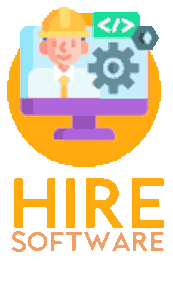Ask Data Structures and Algorithms Questions and unlock the realm of computational efficiency. Dive deep into the architectures that underpin our digital universe.As a hiring manager or recruiter, it is essential to evaluate candidates’ proficiency in these areas to assess their problem-solving abilities.
Key Takeaways
- Data structures and algorithms questions are crucial in assessing a software engineer’s problem-solving abilities.
- Effective questioning requires selecting appropriate data structures and algorithms and designing well-structured questions.
Understanding the Significance of Data Structures and Algorithms
Before diving into the interview process, it is essential to understand why data structures and algorithms play a crucial role in software engineering. Data structures refer to the arrangement of data in a computer’s memory, while algorithms are a set of instructions used to solve a problem efficiently. Together, they form the backbone of computer science and software engineering.
Using the appropriate data structures and algorithms can lead to significant performance improvements and system optimizations. Knowledge of these concepts can enable developers to write better code that is efficient, scalable, and maintainable.
Moreover, data structures and algorithms are prominent in various industries, from social media and e-commerce to healthcare and finance. Consequently, having a command of these concepts is vital for software engineers to succeed in their careers and take on challenging projects.
Selecting Appropriate Data Structures and Algorithms
Choosing the right data structures and algorithms is key to writing efficient and optimized code. When selecting the most appropriate data structures and algorithms, it’s essential to consider factors such as the problem’s size, data type, and expected input/output values.
One way to assess a candidate’s ability to select data structures and algorithms is to present them with problem-solving scenarios. For example, you could ask candidates to solve a problem that involves searching for a specific element in an unsorted array, and then ask them to explain their thought process and justify their solution. This will give you insights into the candidate’s problem-solving abilities and their understanding of basic data structures such as arrays and the algorithms associated with them.
| Factors to Consider | Example |
|---|---|
| Data Type | If the problem involves string manipulation, you might want to consider using a trie data structure or a hash table to optimize search time. |
| Data Size | For large datasets, you might want to consider using data structures such as trees or graphs, which have logarithmic time complexity and handle larger data sizes efficiently. |
| Expected Input/Output Values | If the problem requires a unique solution, you might want to consider data structures that enforce uniqueness such as sets or hash maps. |
It’s also important to consider the time and space complexity of an algorithm. A candidate who can efficiently optimize an algorithm’s time and space complexity shows a deeper understanding of data structures and algorithms.
In addition to assessing candidates’ knowledge, you can also encourage them to ask clarifying questions about the problem and seek feedback on their selected solution. This demonstrates their problem-solving approach and their ability to collaborate effectively.
Designing Effective Questions
Asking the right questions is essential for assessing a candidate’s understanding of data structures and algorithms. When designing questions, it is important to frame them in a way that evaluates problem-solving skills and the ability to apply these concepts in real-world scenarios.
Structuring Questions
To effectively assess a candidate’s understanding of data structures and algorithms, questions should be structured in a way that enables them to demonstrate their knowledge. Rather than asking generic questions that require rote memorization, it is better to ask open-ended questions that allow candidates to showcase their problem-solving skills.
Example: Instead of asking, “What is a binary search tree?”, ask “How would you implement a binary search tree?”
Additionally, it is important to frame questions in a way that provides context and allows candidates to think critically about the problem at hand. Use real-world examples whenever possible to create a more engaging and relevant interview experience.
Assessing Thought Processes
In addition to evaluating candidates’ technical knowledge, it is important to assess their thought processes and problem-solving approaches. One effective way to do this is by asking candidates to explain their thinking behind their solutions.
Encourage candidates to explain their reasoning and walk through their code step by step. This can help identify any gaps in their understanding and provide valuable insights into their approach to problem-solving.
Emphasizing Optimization and Efficiency
When evaluating a candidate’s understanding of data structures and algorithms, it is crucial to consider their ability to optimize code for time and space complexity. Asking questions that require candidates to consider efficiency can help identify those with a deeper understanding of these concepts.
For example, you could ask candidates to compare the performance of different sorting algorithms in terms of time and space complexity.
Follow-up questions can be an effective way to dive deeper into a candidate’s knowledge and understanding. They can also help keep the conversation flowing and provide a more engaging interview experience.
When asking follow-up questions, try to build on the candidate’s previous responses and provide additional context. This can help elicit more detailed and insightful answers.
Designing effective questions is essential for assessing a candidate’s understanding of data structures and algorithms. By structuring questions in a way that evaluates problem-solving skills, assessing thought processes, emphasizing optimization and efficiency, and using follow-up questions, recruiters and hiring managers can gain valuable insights into a candidate’s technical abilities.
Assessing Problem-Solving Approaches
One of the key skills recruiters and hiring managers look for in software engineers is problem-solving ability. Assessing a candidate’s problem-solving approach during an interview can provide valuable insights into their thought processes and decision-making abilities.
One effective strategy to evaluate problem-solving skills is to present candidates with a sample problem and ask them to work through it. This approach allows you to observe how candidates approach problems, break them down into manageable components, and devise creative solutions. It is important to keep a watchful eye on candidates’ problem-solving methods, including any assumptions they make and the steps they take to reach a solution.
Techniques for Assessing Problem-Solving Skills
There are several methods you can use to evaluate a candidate’s problem-solving ability during a software engineer interview. Here are a few techniques to consider:
- The “Think-Aloud” Approach: Encourage candidates to verbalize their thought process as they work through a problem. This technique allows you to understand how candidates approach difficult situations and identify areas where they might be struggling.
- The “Reverse-Engineering” Approach: Present candidates with a completed solution and ask them to explain how they would have arrived at it. This approach can help you evaluate how well candidates understand data structures and algorithms.
- The “Collaborative” Approach: Pair candidates up and give them a problem to solve together. This method allows you to observe how candidates communicate and collaborate to arrive at a solution.
Using Follow-Up Questions to Assess Candidates’ Problem-Solving Skills

Asking follow-up questions can help you gain a deeper understanding of a candidate’s problem-solving approach. Some useful follow-up questions might include:
- What other approaches did you consider?
- What trade-offs did you consider when choosing your solution?
- What would you have done differently if you had more time?
By asking these types of questions, you can gain valuable insight into a candidate’s critical thinking and problem-solving skills.
Encouraging Code Walkthroughs and Explanations
Asking candidates to explain and walk through their code can provide valuable insights into their understanding of data structures and algorithms. It’s important to encourage candidates to elaborate on their thought process and decision-making when solving a problem.
One effective approach is to ask candidates to explain the purpose of each line of code and how it contributes to the overall solution. This can help identify any potential flaws or inefficiencies in the code. Additionally, it’s a good idea to ask candidates to propose alternative solutions and compare their pros and cons.
“Can you walk me through your code and explain how you arrived at your solution?”
Remember to provide candidates with positive feedback and encouraging remarks throughout the code walkthrough. This can create a comfortable and positive environment that motivates candidates to perform their best.
Providing Real-World Problem Scenarios
Real-world problem scenarios can test a candidate’s ability to apply data structures and algorithms to practical situations. They can help evaluate a candidate’s problem-solving skills and creativity. One approach is to provide candidates with actual business problems and ask them to provide optimized solutions. Challenge them to write the most efficient code possible, taking into account time and space complexity.
Another approach is to present coding challenges that resemble real-world problems but are designed to test a candidate’s understanding of critical concepts. For example, you could provide a scenario in which the candidate has to manage a large collection of data and optimize search or retrieval operations.
It’s essential to make the scenario realistic to give candidates an opportunity to demonstrate their technical skills, creativity, and analytical ability.
Assessing Time and Space Complexity
Understanding time and space complexity is essential for evaluating a software engineer’s proficiency. Time complexity refers to the amount of time an algorithm takes to execute, while space complexity refers to the amount of memory an algorithm requires to run. A good software engineer will always strive to optimize both time and space complexity to ensure fast and efficient code.
When assessing a candidate’s knowledge of time and space complexity, consider asking questions that challenge their understanding of these concepts. For example, you could ask them to analyze the time and space complexity of a particular algorithm and explain the steps they took to arrive at their answer.
| Question: | What is the time complexity of the following code snippet? |
|---|---|
| Code: | // Assume n is an integer input for (int i = 0; i < n; i++) { for (int j = 0; j < n; j++) { System.out.println(“Hello, World!”); } } |
| Answer: | The time complexity of this code is O(n^2), since there are nested loops that iterate n times each. |
It’s also important to assess a candidate’s ability to optimize code for better time and space complexity. You could ask them to suggest improvements to a given algorithm or code snippet to improve its efficiency. These types of questions can help you evaluate a candidate’s problem-solving skills, creativity, and knowledge of various data structures and algorithms.
Overall, assessing a candidate’s understanding of time and space complexity is a crucial aspect of evaluating their proficiency in data structures and algorithms. By asking relevant questions and evaluating their problem-solving skills, you can gain valuable insights into their ability to write fast and efficient code.
Collaborative Problem-Solving Sessions
Collaborative problem-solving sessions can be an excellent way to simulate real-world teamwork scenarios and assess candidates’ ability to work effectively in a team. These sessions can provide insight into a candidate’s communication skills, leadership abilities, and ability to collaborate with others.
During the interview, consider assigning a group problem-solving task and observe how candidates handle the situation. Pay attention to how they communicate with each other, how they delegate tasks, and how they work together to come up with a solution.
One way to structure this is to divide the group into smaller teams and give them a problem to solve together. Encourage each team member to share their thoughts and ideas, and ensure that everyone has the opportunity to contribute. Observe how each team interacts with one another and how they come up with a solution.
After the activity, take the time to debrief with the group and ask them to reflect on their experience. This can help you gain a better understanding of how candidates handle group problem-solving scenarios and provide valuable insights into their teamwork skills.
Engaging Candidates with Follow-Up Questions
Asking follow-up questions during a software engineer interview is an excellent way to delve deeper into a candidate’s thought process and assess their problem-solving skills. By asking engaging follow-up questions, recruiters and hiring managers can effectively evaluate a candidate’s proficiency in data structures and algorithms.
For example, you can ask the candidate to explain the time and space complexity of their solution and how they would optimize it for better performance. You can also ask the candidate to compare and contrast different data structures and algorithms and explain which one would be the best fit for a specific problem.
Moreover, you can present the candidate with new scenarios and ask them to modify their existing solution to fit the new requirements. This will test their adaptability and creativity in problem-solving.
It is crucial to listen intently to the candidate’s response and ask follow-up questions accordingly. This shows the candidate that you are genuinely interested in their thought process and helps build a rapport between the interviewer and the interviewee.
Providing Feedback and Guidance
One of the most crucial aspects of the interview process is providing feedback and guidance to candidates. As a recruiter or hiring manager, it is essential to ensure that candidates walk away from the interview with valuable insights and advice, regardless of whether they are successful or not.
Try to provide feedback that is specific and actionable. Instead of simply highlighting areas of weakness, provide examples of how candidates can improve and what steps they can take to enhance their understanding of data structures and algorithms. By doing so, you can help candidates develop their problem-solving skills further.
Additionally, be sure to offer guidance and resources to candidates. Point them towards relevant online courses, books, or other learning materials that can help them further their knowledge and understanding of data structures and algorithms. Your guidance can make a significant difference in a candidate’s growth as a software engineer.
Remember that feedback and guidance should always be delivered in a constructive and supportive manner. Encourage candidates to ask questions and seek clarification, and always be open to discussion and dialogue.
Conclusion

Asking data structures and algorithms questions in a software engineer interview is vital for assessing candidates’ problem-solving skills.
To effectively evaluate candidates’ proficiency in these key areas, it is crucial to understand the significance of data structures and algorithms, select appropriate data structures and algorithms, design effective questions, assess problem-solving approaches, encourage code walkthroughs and explanations, provide real-world problem scenarios, assess time and space complexity, conduct collaborative problem-solving sessions, engage candidates with follow-up questions, and provide feedback and guidance.
By following the strategies and tips outlined in this guide, recruiters and hiring managers can conduct effective interviews and select the most qualified candidates for their teams. Remember to keep the tone of the interview friendly and engaging while maintaining a logical flow throughout the process. Good luck with your future interviews!
FAQ

Q: How important are data structures and algorithms questions in a software engineer interview?
A: Data structures and algorithms questions play a crucial role in assessing a software engineer’s problem-solving abilities during an interview. They help evaluate candidates’ understanding of fundamental concepts and their ability to apply them in real-world scenarios.
Q: Why are data structures and algorithms significant in software engineering?
A: Data structures and algorithms are essential in software engineering as they enable efficient and optimized code. They help solve complex problems, improve the performance of applications, and enhance scalability and memory management.
Q: What factors should be considered when selecting data structures and algorithms?
A: When selecting data structures and algorithms, factors such as the problem requirements, input size, efficiency, and expected operations need to be considered. It is crucial to choose structures and algorithms that best fit the problem’s constraints.
Q: How can I design effective questions to assess candidates’ understanding of data structures and algorithms?
A: To design effective questions, structure them in a way that tests candidates’ problem-solving skills and ability to apply data structures and algorithms. Use real-world examples, focus on different problem-solving approaches, and encourage candidates to explain their thought processes.
Q: What are some techniques to assess candidates’ problem-solving skills during an interview?
A: Techniques such as code walkthroughs, whiteboard exercises, and real-time problem-solving sessions can help evaluate candidates’ problem-solving skills. These techniques allow recruiters to observe candidates’ approach to problem-solving and their ability to make efficient decisions.
Q: How can I encourage candidates to explain their code and solutions?
A: Encourage candidates to walk through their code by asking them to explain their thought processes, the rationale behind their decisions, and any trade-offs they made. This will help assess their understanding of data structures and algorithms.
Q: How can real-world problem scenarios be used to test candidates’ problem-solving abilities?
A: Presenting candidates with real-world problem scenarios allows recruiters to evaluate their ability to apply data structures and algorithms in practical situations. By assessing how candidates approach these scenarios, recruiters can gauge their problem-solving skills and creativity.
Q: How can I assess candidates’ knowledge of time and space complexity?
A: To assess candidates’ knowledge of time and space complexity, ask questions about the efficiency of their code solutions and whether they can optimize them further. Evaluate their understanding of Big O notation and their ability to analyze algorithms.
Q: How can collaborative problem-solving sessions be conducted during interviews?
A: Conducting collaborative problem-solving sessions involves presenting a problem to a candidate and allowing them to discuss their approach with an interviewer. This simulates real-world teamwork scenarios and assesses the candidate’s ability to collaborate effectively.
Q: Why are follow-up questions important during the interview process?
A: Follow-up questions allow interviewers to delve deeper into a candidate’s understanding of data structures and algorithms. They provide the opportunity to assess the candidate’s ability to justify their solutions, consider edge cases, and further explore their problem-solving skills.
Q: How can feedback and guidance be provided to candidates during the interview?
A: Providing constructive feedback and guidance to candidates can help enhance their learning experience. Offer suggestions for improvement, highlight areas where they excelled, and provide resources or recommendations for further development.








